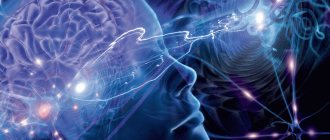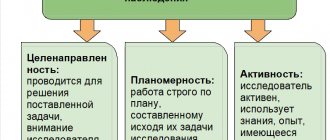History of psychogenetics
The history of the development of psychogenetics can be divided into five stages:
- Development of basic variational and statistical approaches.
- development of basic methods of psychogenetics - twins, adopted children, methods of correlation and regression analysis, path analysis, etc.
- Exploring the role of heredity and environment in individual differences in intelligence and mental illness.
- Improve the methodology of psychogenetics and find new ways of research.
- develop the Human Genome Project.
The basis for the emergence of psychogenetics as a science was the theory of evolution of Charles Darwin.
Francis Galton is considered the author of the first scientific study on psychogenetics ("Hereditary Genius", 1869) and the founder of psychogenetics.
1. At the first stage (1865-1900s), Galton and his student K. Pearson developed the main variation-statistical approaches to the study of the heredity of quantitative human traits (including psychological ones).
2. At the second stage (until the end of the 1930s), the main methods of psychogenetics were twins, adopted children, methods of correlation and regression analysis, path analysis, etc. — was finally formed thanks to the joint efforts of geneticists, psychologists, and mathematicians. With the development of psychodiagnostics in psychogenetics, the accumulation of factual material began.
3. The third stage (until the end of the 60s) is characterized by extensive development. Factual material is being accumulated. Much attention is paid to studying the role of heredity and environment in individual variability in intelligence and mental illness.
4. At the fourth stage (by the end of the 1980s), psychogenetics again pays significant attention to improving the methodology of science and finding new ways to conduct research. Improvements in information technology have contributed to the use of computer modeling methods. The study of the role of heredity and environment in development, including various types of developmental disorders, is becoming increasingly dominant. Longitudinal studies are becoming increasingly popular, and various aspects of environmental influences are being analyzed in more detail.
5. The fifth phase (from the 1990s to the present) coincides with the intensive development of the human genome project.
The genome is the totality of genetic material contained in the cell of any living organism. A cell is an elementary unit of structure and vital activity of all living organisms (with the exception of viruses, which are often classified as non-cellular forms of life), which has its own metabolism and is capable of independent existence, self-reproduction and development. All tissues of living organisms either consist of many cells, as in multicellular animals, plants and fungi, or are single-celled organisms, as in many protozoa and bacteria.
The genome contains the biological information necessary to create and maintain an organism. Most genomes, including the human genome and the genomes of all other cellular life forms, are made of DNA, but some viruses have genomes made of RNA.
There is also another definition of the term “genome”, in which the genome is understood as the totality of the genetic material of the haploid set of chromosomes of a given species.
The haploid set (Greek gaploos - one, eidos - species) is the normal number of chromosomes in each gamete (in humans it is 23, until recently it was believed to be 24).
Gametes are reproductive cells that have a haploid (single) set of chromosomes and participate in gametic, especially sexual, reproduction.
Eukaryotes, or cores, are a region (superset) of living organisms whose cells contain a nucleus.
All organisms, with the exception of prokaryotes (bacteria and archaea), are nucleated.
Setting goals
What challenges do scientists face? What does psychogenetics conceal? The main and main task of psychogenetics is to track and identify causes, both genetic and those that arose due to the influence of the surrounding world, as a result of which differences in people are formed.
Modern psychogenetic research focuses more on the dependence of the results of children's intelligence testing on the quality of the level of the environment where the child lives and the quality of education he receives. Which factor still has a greater influence on the development of a child? Psychogenetics studies how books, computer games, and music influence the formation of temperament and the level of intellectual development.
We recommend: Choosing a life path
Thus, the subject of psychogenetics research is nothing more than a person’s character, which is formed through the influence of the external environment and heredity. This is the main subject of psychogenetics.
Individual differences are also the subject of psychogenetics. Scientists are especially interested in the differences between people in a single family; they compare not different races, but rather people in whose veins the same blood flows.
Methodology of psychogenetics
The methodological capabilities of psychogenetics are limited:
- Impossibility of arbitrary experimentation; the object of research is a person;
- late onset of the reproductive period;
- a small number of offspring. However, psychogenetics uses quite professional methods and applies the methods of modern genetics. The main methods of psychogenetics are:
- population method;
- genealogical method;
- foster children method;
- twin method.
Population method. A population is a collection of individuals of a given species living in a given space for a sufficiently long time (a large number of generations), within which one or another degree of panmixia (random formation of parental pairs independent of the genotype and phenotype of individuals) is practically carried out and there are no noticeable insulation barriers.
This population of individuals is separated from neighboring populations of individuals of a given species by some form of isolation pressure.
Man belongs to one of the species of living beings and is characterized by the formation of certain populations.
In addition to biological reasons, various social factors also influence the formation of human populations.
Human populations can vary in size.
The term “population” can be applied not only to the population of cities, but also of entire countries.
For example, with the collapse of the USSR, migration of various population groups from one country to another began.
You can also take Moscow and New York as an example. Where every day a large number of people of different nations and communities inhabiting different places cannot be accommodated in these megacities.
Closed populations are called isolates. Isolates are closed populations.
The influx of external spouses is no more than 1.5 - 2%. Isolates in human populations can occur not only in geographically isolated places, but also within large populations when some groups of people do not mix with the rest of the population, for example, for religious or ethnic reasons.
The prototype is groups of people who live with everyone else but do not mix with them (castes in India).
There is variability in traits in a population; depending on the type of variability, there are 2 types of traits: -Quantitative traits; -Quantitative characteristics; -Quantitative characteristics.
Qualitative (discrete) characters are found in a limited number of variants, the differences between individuals are clearly expressed, and there are no intermediate forms.
External conditions have relatively little influence on their expression. Such characteristics include, for example, blood groups in people.
Quantitative characteristics. Quantitative (continuous) characteristics have continuous variability and constitute the bulk of human behavioral characteristics.
All quantitative traits can be measured, and the requirements for psychological measurements in behavioral genetics remain the same, which psychodiagnostic procedures must meet: -reliability; -reliability; -reality; -reliability; -representativeness.
The genetic structure of populations is one of the most important factors determining the characteristics of the hereditary transmission of various traits.
When studying the mechanisms of inheritance of any human trait, it is necessary to take into account the characteristics of the population being studied.
Genetic changes at the population level are typically analyzed using two mathematical approaches. -deterministic approach -stochastic approach.
The genealogical method is a method of constructing a pedigree - a method of collecting and analyzing pedigrees.
The purpose of the method: -Determination of the heredity of a trait; Determination of the type of inheritance of a trait (autosomal, sex-linked, dominant, recessive); - identification of persons, carriers; -Determining the prognosis of offspring.
“It is based on simple logic: if any trait is encoded in genes, then the closer the family ties (that is, the more similar the genes), the more these people should be similar to each other in this trait.
The emergence of a new branch of science
The history of psychogenetics began in England. The founder of psychogenetics is the English scientist Francis Galton. As the founder of psychogenetics, Galton was the first to conduct research in the field of personality. He managed to collect a huge amount of material, he created measurement procedures and analyses.
Galton was the first to pose the question for the entire scientific community: “How, through what means do individual characteristics appear?” He was the first to try to solve it.
His thoughts also interested other scientists, who also began to conduct research and analyze the people around them. What were their results and conclusions?
The genetic code embedded in us determines our life path even before we are born! Everything is predetermined: behavior patterns in certain situations, and our development prospects - all this is already in us from the very beginning! The entire centuries-old experience of ancestors, their signs and characteristics are stored in the DNA molecule.
We recommend: Personalization: definition of the concept
That is, each of us has our own life path, which has already been laid out and paved by heredity, regardless of our conscious reactions. Our direction vector influences:
- Success.
- Behavior.
- Health.
Genealogical method
The genealogical method is a method of compiling a pedigree - a method of collecting and analyzing family trees.
The purpose of the method is to: -Determine the heritability of a trait; Determine the type of inheritance of the trait (autosomal, sex-linked, dominant, recessive); -Identify people, carriers; -Determine the prognosis of the offspring.
“It is based on simple logic: if any trait is encoded in genes, then the closer the family ties (that is, the more similar the genes), the more similar these people should be in this trait. Therefore, a necessary condition for using the genealogical method is the presence of relatives of the first degree, forming the so-called nuclear family; This includes parent-child and sibling pairs;
- these, and only these, share on average 50% of their genes. Moreover, as the degree of relatedness decreases, the proportion of common genes decreases, and, according to the scheme of the method, the similarity of people should decrease.
The more generations the family tree includes and the larger the circle of relatives, that is, the more extensive it is, the more reliable the results should be.
There are certain rules and symbols for drawing up family trees.
The person for whom a genealogy is created (for example, with a rare ability or, in medical genetics, with a suspected hereditary disease) is called a proband.
The members of the family tree are arranged in generational order, indicated by Roman numerals on the left side of the page where appropriate: -Previous generations to subsequent generations; -Children in each family are from left to right according to birth order, they are indicated either by numbers or by age. For some tasks, such as psychotherapy, it is important to know the types of dyadic relationships in addition to related ones; then they can also be noted on the family tree.
Some researchers suggest calling this drawing a genogram.
A genogram is a format for representing a family tree by recording information about family members and their relationships over at least three generations. The genogram graphically represents family information in a way that creates a picture of a complex family pattern and provides an additional source of clues about how the clinical problem may be related to the family context and the dynamics of one and the other over time.” Textbook of psychogenetics /I. V. Ravich-Scherbo.
The adopted children method is a comparison of the similarities in certain psychological characteristics between a child and his biological parents, on the one hand, and the child and the adoptive parents who raised him, on the other.
On the one hand, this method has rather narrow boundaries: -legal -Psychological. -Possibility of non-random distribution of children among families; -Subjective “legends” about parents/adoptive parents.
However, despite the disadvantages, this method has some advantages in psychogenetics. First, it is theoretically the purest method with the highest resolution.
Foster care research involves children who are placed as early as possible with foster parents who are strangers—the foster parents, their biological parents, and their adoptive parents.
A variation of the adopted children method is the study of so-called adopted (fused) siblings, that is, several non-biological children adopted by the same family.
There are two schemes of this method: - full scheme. -partial diagram.
The full scheme combines data from two groups: -the scheme for separated relatives (biological parents and their brothers and sisters); -sibling diagram.
A partial schema combines either one or another group of data. The method of adopted children is one of the main methods of modern psychogenetics.








